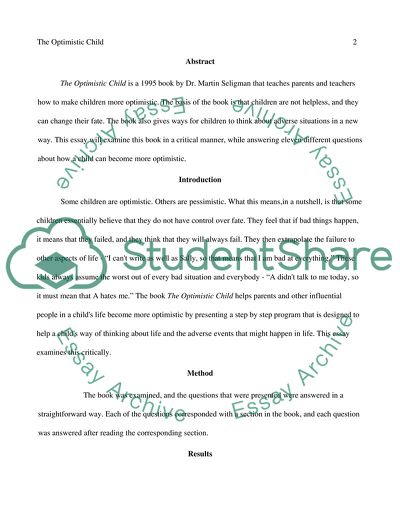Cite this document
(The Optimistic Child Book Report/Review Example | Topics and Well Written Essays - 3750 words, n.d.)
The Optimistic Child Book Report/Review Example | Topics and Well Written Essays - 3750 words. https://studentshare.org/psychology/1797398-relationship-reading
The Optimistic Child Book Report/Review Example | Topics and Well Written Essays - 3750 words. https://studentshare.org/psychology/1797398-relationship-reading
(The Optimistic Child Book Report/Review Example | Topics and Well Written Essays - 3750 Words)
The Optimistic Child Book Report/Review Example | Topics and Well Written Essays - 3750 Words. https://studentshare.org/psychology/1797398-relationship-reading.
The Optimistic Child Book Report/Review Example | Topics and Well Written Essays - 3750 Words. https://studentshare.org/psychology/1797398-relationship-reading.
“The Optimistic Child Book Report/Review Example | Topics and Well Written Essays - 3750 Words”. https://studentshare.org/psychology/1797398-relationship-reading.


